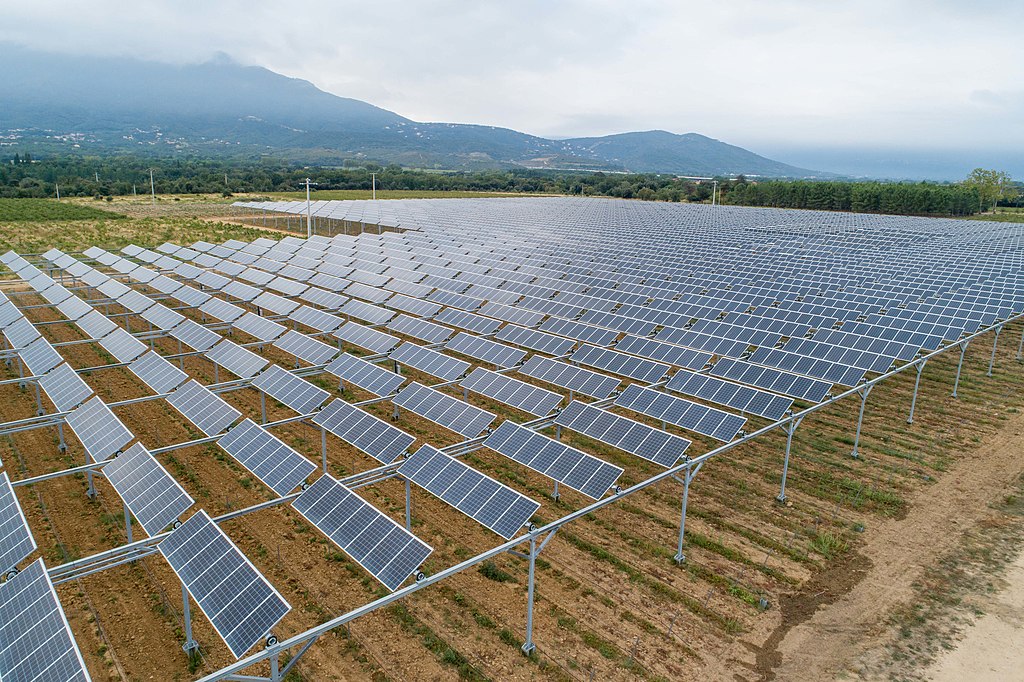Agrivoltaics, the co-location of solar PV with crop production, solves at least two critical needs. Solar provides the renewable energy needed to mitigate climate change effects while meeting global energy demands. And crops grown alongside solar helps to feed the burgeoning population, anticipated to grow to nearly 10 billion people worldwide by 2050 according to the United Nations.
Cornell researchers examined agrivoltaics to find out if there is merit to the perception that co-located sites will see major tradeoffs between food and energy production. The study showed how solar and crop production can not only exist side by side, but how the co-location improves the microclimate and surface temperature of solar PV modules.
The researchers developed a computational fluid dynamics (CFD) microclimate model, which they evaluated against experimental data to investigate the effects of panel height, light reflection (albedo), and how much water is evaporated (evapotranspiration) in a solar PV site. The results were published in reported in Applied Energy.
“We now have, for the first time, a physics-based tool to estimate the costs and benefits of co-locating solar panels and commercial agriculture from the perspective of increased power conversion efficiency and solar-panel longevity,” said lead author Henry Williams, a doctoral student in Cornell Engineering.
The team demonstrated an agrivoltaic facility with soybeans growing under solar modules mounted about 13 feet high exhibits solar module temperature reductions of up to 18 F (10 C), compared to a solar farm mounted at just 1.6 feet over bare soil.
The researchers noted that as modules experience efficiency losses between 0.1 and 0.5 % per degree above 77 C, the implication is that solar conversion efficiency is greater when solar is mounted above crops compared to exposed soil or gravel. In addition to efficiency improvements, years of reduced operating temperatures will lead to improved solar module lifespan, according to the researchers, which they believe speaks to the long-term economic potential of agrivoltaic systems.
“There is potential for agrivoltaic systems – where agriculture and solar panels coexist – to provide increased passive cooling through taller panel heights, more reflective ground cover and higher evapotranspiration rates compared to traditional solar farms,” said senior author Max Zhang, professor in the Sibley School of Mechanical and Aerospace Engineering, “We can generate renewable electricity and conserve farmland through agrivoltaic systems.”
In addition to the noted benefits, pairing energy and crops solves the land use issues faced by both solar developers and large-scale farmers. According to a previous research study from Zhang’s group, about 40% of utility-scale solar farm capacity has been developed on agricultural lands in New York state, while about 84% of land deemed suitable for utility-scale solar development is agricultural.
“As you decrease the solar panel operating temperature, you can increase efficiency and improve the longevity of your solar modules,” said Williams, “We’re showing dual benefits. On one hand, you have food production for farmers, and on the other hand, we’ve shown improved longevity and improved conversion efficiency for solar developers.”
With global food demands expected to increase by 50% by 2050, according to the World Resources Institute, and the need to mitigate the impact of climate change, agrivoltaics appears to offer a myriad of benefits, the study concludes.
“Up to this point, most of the benefits from agrivoltaic systems have revolved around hot and arid climate zones,” said Zhang, also the Kathy Dwyer Marble and Curt Marble Faculty Director for the Cornell Atkinson Center for a Sustainable Future, “This paper is taking a step toward evaluating the viability of agrivoltaics in climates representative of the Northeastern U.S. in relaxing the land-use competition the world faces.”
This article was updated to correct the temperature reduction mentioned as 50 F (10 C), which should be temperature reductions of up to 18 F (10 C).
This content is protected by copyright and may not be reused. If you want to cooperate with us and would like to reuse some of our content, please contact: editors@pv-magazine.com.









Looking at the stakes going into the ground supporting the solar panels makes me wonder if those could stakes double as Earth batteries. Especially with the Agroponics. Considering the water, fertilizers, and root for interaction with that environment, there’s bound to be a few more free electrons floating around in the ground.